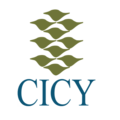Por favor, use este identificador para citar o enlazar este ítem:
http://cicy.repositorioinstitucional.mx/jspui/handle/1003/2675| Consequences of introgression and gene flow on the genetic structure and diversity of Lima bean (Phaseolus lunatus L.) in its Mesoamerican diversity area | |
| Mauricio Heredia Pech MARIANA CHAVEZ PESQUEIRA MATILDE MARGARITA ORTIZ GARCIA RUBEN HUMBERTO ANDUEZA NOH MARÍA ISABEL CHACÓN SÁNCHEZ JAIME MARTINEZ CASTILLO | |
| Acceso Abierto | |
| Atribución-NoComercial-SinDerivadas | |
| doi: 10.7717/peerj.13690 | |
| SNPS MARKERS MAYAN MILPA YUCATAN PENINSULA WILD-WEEDY-CROP COMPLEXES WILD-CROP INTROGRESSION | |
| We evaluated the role of gene flow and wild-crop introgression on the structure and genetic diversity of Lima bean (Phaseolus lunatus) in the Yucatan Peninsula, an important Mesoamerican diversity area for this crop, using a genotyping-by-sequencing approach (15,168 SNP markers) and two scales. At the local scale, STRUCTURE and NGSEP analyses showed predominantly crop-to-wild introgression, but also evidence of a bidirectional gene flow in the two wild-weedy-crop complexes studied (Itzinté and Dzitnup). The ABBA-BABA tests showed a higher introgression in Itzinté (the older complex) than in Dzitnup (the younger one); at the allelic level, the wild-crop introgression in Itzinté was similar in both directions, in Dzitnup it was higher from crop-to-wild; and at the chromosomal level, introgression in Itzinté was from wild-to-crop, whereas in Dzitnup it occured in the opposite direction. Also, we found HE values slightly higher in the domesticated accessions than in the wild ones, in both complexes (Itzinté: wild = 0.31, domesticated = 0.34; Dzinup: wild = 0.27, domesticated = 0.36), but %P and π estimators were higher in the wild accessions than in the domesticated ones. At a regional scale, STRUCTURE and MIGRATE showed a low gene flow, predominantly from crop-to-wild; and STRUCTURE, Neighbor-Joining and PCoA analyses indicated the existence of two wild groups and one domesticated group, with a marked genetic structure based in the existence of domesticated MI and wild MII gene pools. Also, at the regional scale, we found a higher genetic diversity in the wild accessions than in the domesticated ones, in all estimators used (e.g., HE = 0.27 and HE = 0.17, respectively). Our results indicate that gene flow and introgression are playing an important role at the local scale, but its consequences on the structure and genetic diversity of the Lima bean are not clearly reflected at the regional scale, where diversity patterns between wild and domesticated populations could be reflecting historical events. Copyright 2022 Heredia-Pech et al. | |
| 2022 | |
| Artículo | |
| PeerJ, 10, e13690, 2022. | |
| Inglés | |
| Heredia-Pech, M., Chávez-Pesqueira, M., Ortiz-García, M. M., Andueza-Noh, R. H., Chacón-Sánchez, M. I., & Martínez-Castillo, J. (2022). Consequences of introgression and gene flow on the genetic structure and diversity of Lima bean (Phaseolus lunatus L.) in its Mesoamerican diversity area. PeerJ, 10, e13690. | |
| DESARROLLO VEGETAL | |
| Versión publicada | |
| publishedVersion - Versión publicada | |
| Aparece en las colecciones: | Artículos de Investigación Arbitrados |
Cargar archivos:
| Fichero | Tamaño | Formato | |
|---|---|---|---|
| 2022_Mauricio_Heredia.pdf | 12.16 MB | Adobe PDF | Visualizar/Abrir |
